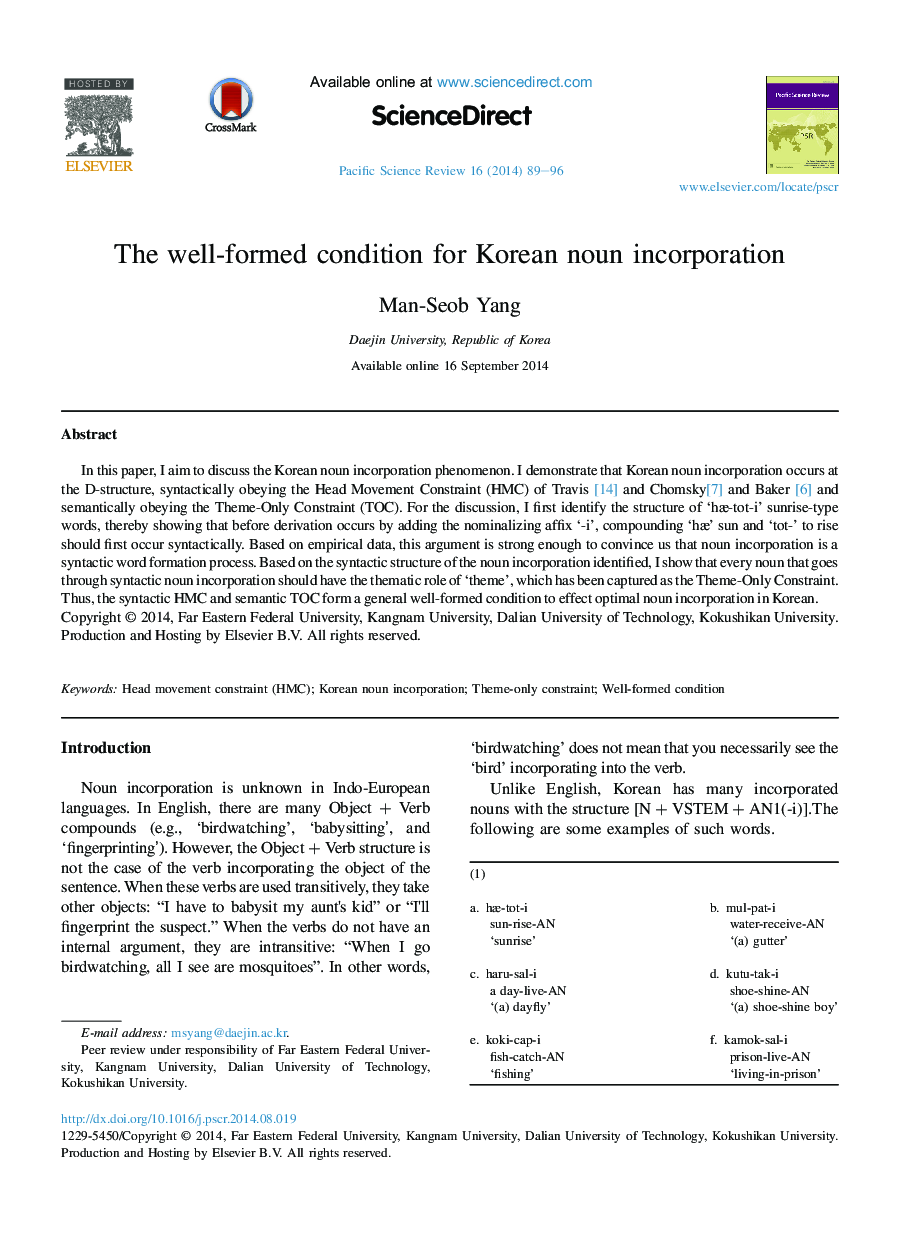| Article ID | Journal | Published Year | Pages | File Type |
|---|---|---|---|---|
| 999228 | Pacific Science Review | 2014 | 8 Pages |
In this paper, I aim to discuss the Korean noun incorporation phenomenon. I demonstrate that Korean noun incorporation occurs at the D-structure, syntactically obeying the Head Movement Constraint (HMC) of Travis [14] and Chomsky[7] and Baker [6] and semantically obeying the Theme-Only Constraint (TOC). For the discussion, I first identify the structure of ‘hæ-tot-i’ sunrise-type words, thereby showing that before derivation occurs by adding the nominalizing affix ‘-i’, compounding ‘hæ’ sun and ‘tot-’ to rise should first occur syntactically. Based on empirical data, this argument is strong enough to convince us that noun incorporation is a syntactic word formation process. Based on the syntactic structure of the noun incorporation identified, I show that every noun that goes through syntactic noun incorporation should have the thematic role of ‘theme’, which has been captured as the Theme-Only Constraint. Thus, the syntactic HMC and semantic TOC form a general well-formed condition to effect optimal noun incorporation in Korean.
